#Ursus maritimus
Text

A pair of polar bears (Ursus maritimus) in Manitoba, Canada.
by Sean Crane
#polar bear#bears#ursus maritimus#ursus#ursidae#carnivora#mammalia#chordata#wildlife: canada#wildlife: north america
11K notes
·
View notes
Text

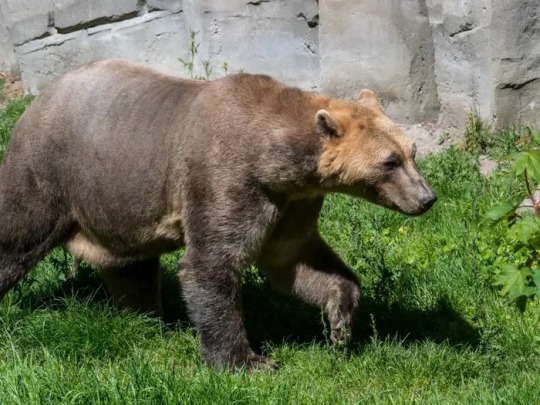
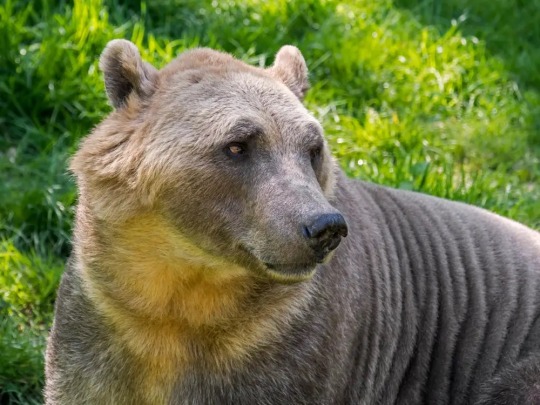
Polar bear x grizzly bear hybrid (U. maritimus × U. arctos)
#hybrid#ursus arctos#ursus maritimus#polar bear#brown bear#grizzly bear#mammal#bear#pizzly bear#grolar bear#I think this captive bred one is a male polar bear to female grizzly breeding so pizzly?#male’s species goes first yeah?
4K notes
·
View notes
Text

Male Polar Bear (Ursus Maritimus) Chasing A Bearded Seal
By Andreas Weith
#andreas weith#photographer#polar bear#bear#ursus maritimus#bearded seal#animal#mammal#wildlife#nature#wikimedia commons
581 notes
·
View notes
Text

Push off: A curious polar bear cub rests on an the M/S Expedition cruise ship as it sails around the islands of Svalbard
217 notes
·
View notes
Text

After successfully hunting a Bearded seal (Erignathus barbatus), a Polar bear (Ursus maritimus) starts feeding on his prey. He enjoys his meal on an ice floe north of Svalbard, Norway.
229 notes
·
View notes
Text

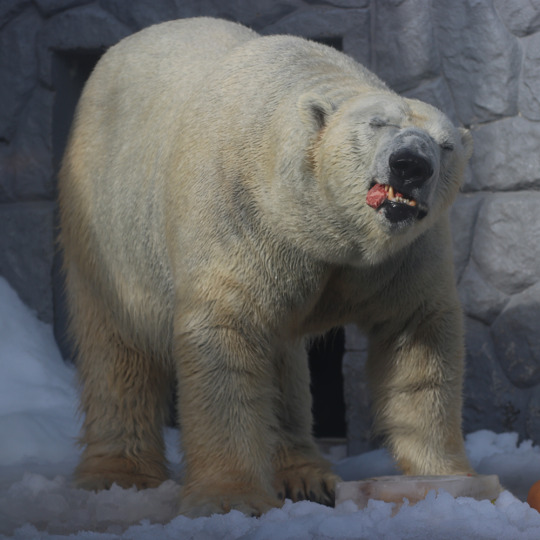
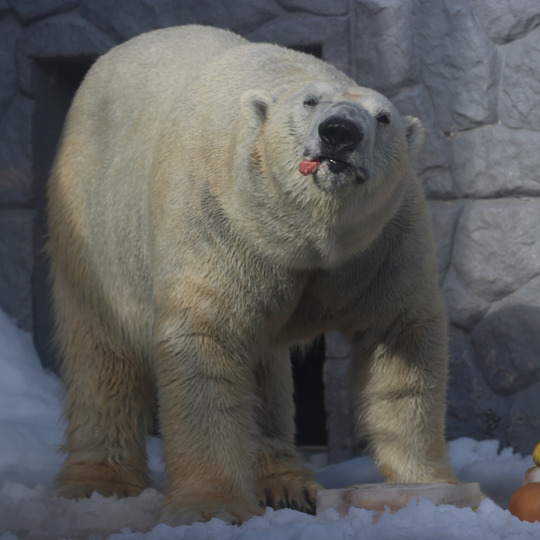
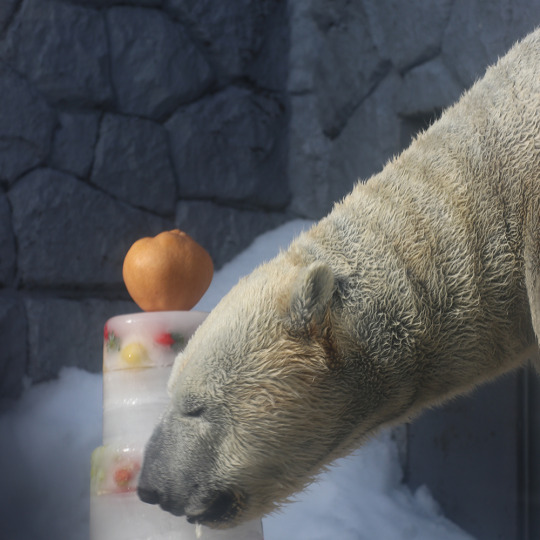
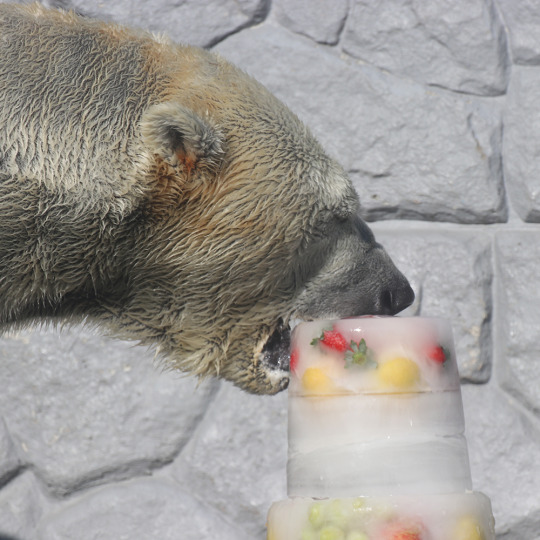

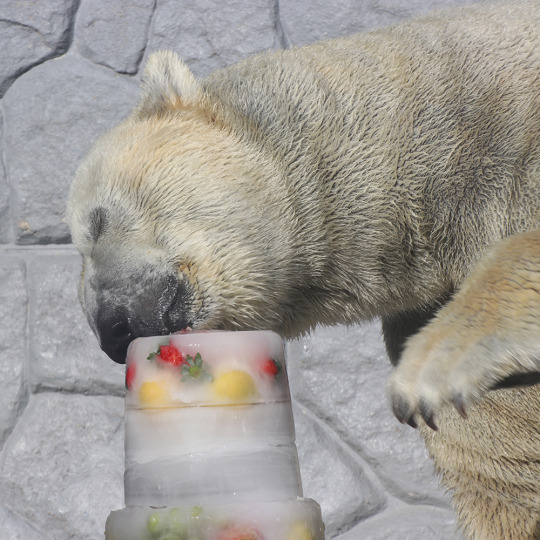
11月27日はロッシーの16さいの誕生日で、前日にパーティーが行われました。おめでとう!ロッシー!
フルーツがたくさん入ったケーキ、おいしそう!
November 27 was his 16th birthday and there was a party!
Happy birtyday, Rossy!
He was given an ice cake filled with fruit.
ケーキをすべらせて壊してて賢かった
@日本平動物園
He broke it by slipping on it like curling. I wonder if they know that this would make it easier to melt the ice.
@Nihondaira Zoo
103 notes
·
View notes
Text
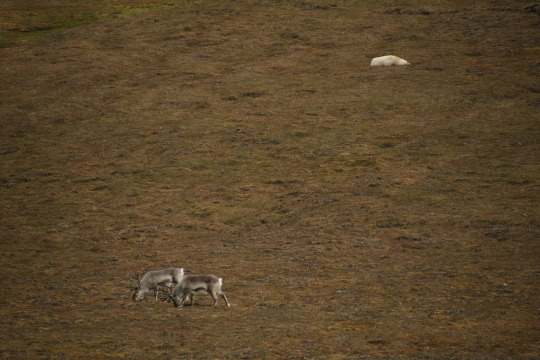
Svalbard reindeer Rangifer platyrhynchus
With polar bear Ursus maritimus
Observed by fratercula640, CC BY-NC
#Rangifer platyrhynchus#Svalbard reindeer#Cervidae#deer#non-ungulate#carnivoran#bear#Ursus maritimus#polar bear#Europe#Norway#Svalbard
23 notes
·
View notes
Text


It’s not easy to swim 175 km (109 mi.) when you’re starving to death. It’s not easy either to try to survive when you’re shedding body weight at a rate of 1 kg (2.2 lbs.) a day.
And it might be hardest — or at least most tragic — of all if you’re a nursing mom and your calorie intake has dropped so low that you can no longer produce the milk you need to care for your young.
As a new paper in Nature Communications reveals, all of those challenges and more are facing the world’s polar bears, thanks to vanishing sea ice in our warming world, denying the animals a platform that they need to hunt for seals.
If the trend isn’t reversed soon, the estimated 26,000 polar bears in the wild could start to lose their hold on survival before the middle of this century.
The researchers were less interested in establishing the fact of the bears’ food plight; scientists are already aware of that problem.
What they were more focused on learning was both how gravely the nutritional loss is affecting the animals’ health and the alternative food sources they’re scrounging for on land.
To do their work, the scientists followed 20 different polar bears in Manitoba, Canada, from 2019 to 2022, fitting them with GPS trackers and video collars and periodically tranquilizing them and analyzing their blood, body mass, daily energy expenditure — basically a measure of calories coming in versus calories going out — and more.
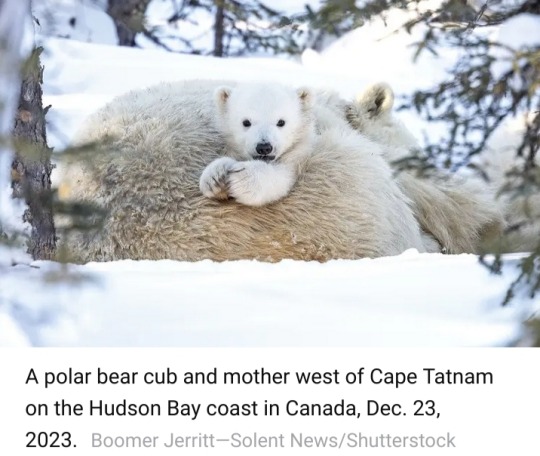
“The polar bears in Hudson Bay [Canada] are probably at the edge of the range at which they can survive right now,” says Anthony Pagano, a research biologist with the U.S. Geological Survey and the lead author of the paper.
“Most of the modeling work suggests that around 2050, they are going to be on land and away from their primary habitat [on the ice].”
The contraction in range of the Hudson Bay community is likely to be reflected in the ranges of the 18 other polar bear subpopulations scattered throughout the Arctic as well.
Across the arc of the study, the data Pagano and his colleagues gathered was troubling.
Weight loss varied from bear to bear, with the daily loss of 1 kg representing just an average.
Some of the subject animals dropped up to 1.7 kg (3.75 lbs) every 24 hours.
That may not seem like much when an adult male polar bear can tip the scales at 550 kg (1,200 lbs) and a female at 320 kg (700 lbs), but it can add up fast.
And with less available to eat, the hungry bears have to travel farther and farther distances to find their next meal.

The individual that swam 175 km — a young female — set the record among the bears studied, but another, older female also covered 120 km (75 mi).
The endurance swims in search of food are energy-intensive and often fruitless for the bears.
They are efficient hunters when they’ve got the purchase of ice beneath them, Pagano and his colleagues explain, but they are clumsy when they are going after seals and trying to swim at the same time.
That leaves them scavenging on land for foods they would not ordinarily eat — and getting little payoff for their efforts.
“Polar bears are feeding on ducks and geese — catching them when they’re flightless and molting — as well as on their eggs,” Pagano says.
Other foods on the desperate bears’ menus included berries and other vegetation, bones, antlers and, in one case, a beluga whale carcass.
None of that fare is as calorie-rich as a steady diet of live, blubber-packed seals.
Some of the bears vigorously sought out these alternative sources of nutrition; others opted for a different strategy: resting and conserving the energy contained in their body mass.
The latter approach costs stored calories, but so does the former, as all of the plodding and searching burns through energy too.
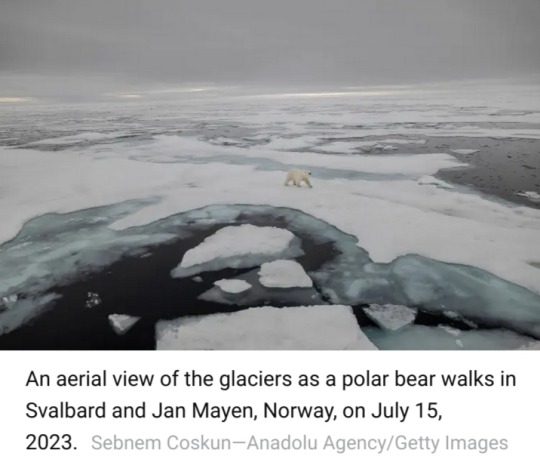
“The amount of body tissue they were burning to try and find those terrestrial foods was basically the same as what they’d get from eating those terrestrial foods,” Pagano says. “So there’s no actual benefit.”
The researchers were surprised to find that the bears were going through not just fat stores to compensate for the poor rations but lean muscle tissue too.
Pagano is not certain why their metabolisms would adopt that strategy, but he has some ideas.
“There's some thought that burning lean body mass might be more energetically efficient in some respects relative to burning body fats,” he says.
“Also, conserving their body fat might provide them better thermal regulation once the winter and the ice return.”
That seasonal freeze-over is shorter than it used to be — though not by a lot.

In the 1980s, polar bears were on land for about 110 days out of the year, with no need to eat terrestrial foods since the fat deposits they’d accumulate thanks to wintertime seal-hunting was enough to carry them the rest of the year.
Now they're off the ice for 130 days on average.
It’s a measure of the nutritional knife’s-edge on which the bears operate that just 20 days can make the difference between whether they live and thrive or starve and die.
The individuals most likely to perish when food supplies are poor are young adults — due to their less-developed hunting skills — and cubs, whose principal source of nutrition, their mother’s milk, can vanish in lean times.
“If females are fasting for extended periods, they will actually stop lactating,” says Pagano.
Full-grown bears are by no means immune to danger, however.
The authors cite earlier research predicting that the adult male population could decrease by 24% if the ice-free summer season increases to 180 days.
This is especially so given the enormous energy intake — about 22,500 calories per day — that the big males need to maintain their body weight.
Polar bears aren’t the only species menaced by these findings. Humans are in harm’s way too.
The more time bears spend off the ice and on land, the greater the likelihood they will wander into cities and towns in search of something to eat — and residents could easily be hurt or attacked if they get in the way of the hungry animals.
People might also even be seen as sources of prey.
“When polar bears are on land, they act like other bears and become omnivores,” says Pagano. “It does raise the potential for human-bear interactions.”
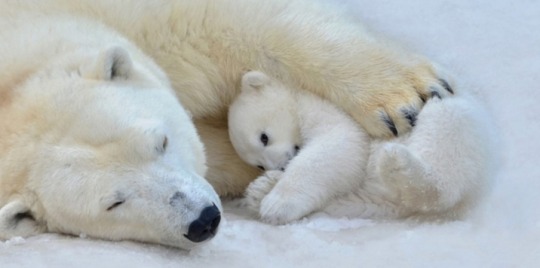

🆘🐻❄️🥺
#polar bears#sea bears#Ursus maritimus#U.S. Geological Survey#Manitoba#Canada#Nature Communications#climate change#wildlife conservation#food source#nutritional loss#animal health#marine mammals#Arctic Circle
9 notes
·
View notes
Text

Polar bear Ursus maritimus (with half a plastic pickle)
North Carolina Zoo — May 2022
#this was the first time I’d see one of the bears in the newer part of their habitat#zoo#North Carolina Zoo#natural history#bear#polar bear#Ursus maritimus#my photo#rambles
166 notes
·
View notes
Text









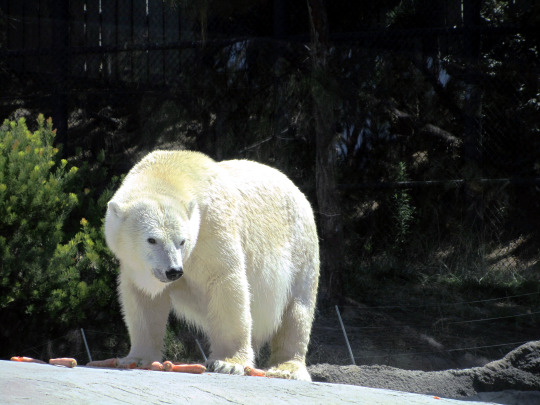


International Polar Bear Day
Polar bears are furry and majestic beasts that roam across the cold Arctic ice. However, in the past few decades, sea ice in the Arctic has been melting at an alarmingly fast rate, leading the polar ice cap to shrink over time. Because of this, polar bears have been losing their habitats, their sources of food and, ultimately, dying from starvation and exhaustion.
International Polar Bear Day aims to raise awareness of the issues threatening these creatures and encourage change.
Why polar bears are the perfect Arctic animal
Polar bears are the apex predators of the Arctic, perfectly adapted to the icy landscape and ocean. It’s thought that they diverged from the brown bear as far back as 6 million years ago – as they moved north, they gradually evolved to brave the formidable polar conditions.
With their thick fur and ample body fat providing plenty of insulation, along with their small ears and tails minimizing heat loss, these ice bears are often more at risk of overheating than they are of freezing! Pair this with their large, padded paws, which turn them into powerful swimmers as well as proficient Arctic explorers, able to spread their weight on thin ice and grip onto the slippery surface, and it’s no wonder these marine mammals dominate the food chain.
Polar bears are spread across the Arctic Ocean, from Alaska in the west to Russia in the east and with around two thirds found in Canada. They mainly eat seals, which they catch either by creeping up on them while they rest on the ice or more commonly through a method known as ‘still-hunting’, in which they lie in wait besides seals’ breathing holes, poised for their dinner to appear.
The Inuit and other Arctic peoples have a close relationship with these magnificent bears, showing them great respect in both their culture and their hunting techniques. Legends and folk tales depict the nanuq (the Inuit term for polar bear) as a wise and spiritual being with an affinity to humans. And when it comes to hunting, they make use of almost all parts of the bear for food, clothes, fuel and medicine, meaning nothing goes to waste.
History of International Polar Bear Day
Organized by Polar Bears International, International Polar Bear Day aims to raise awareness of the plight of polar bears and the threats they face, including disruption to denning and the effects of climate change.
Commercial activities such as oil and gas exploration, shipping, mining and tourism have been affecting the polar bear’s habitat and ability to survive, in particular by encroaching on the terrain that mother bears use to build dens and raise their cubs.
Alongside these industries competing for precious space in the Arctic, the polar ice cap on which the bears depend is also melting due to climate change. They live off of the sea ice, relying on it for hunting, traveling, breeding and denning. And it’s vital that they maintain sufficient fat reserves to protect against the cold. Depleted sea ice affects both their food source and their habitat, increasing the risk of starvation and making it harder to raise cubs.
As a result of these developments, polar bears have been classed as ‘vulnerable’ by the International Union for Conservation of Nature (IUCN), which means this beautiful species could decline by over a third within three generations and is potentially at risk of extinction if temperatures continue to increase.
International Polar Bear Day is therefore all about conservation. To celebrate, people take the time to learn about polar bears, their ecosystem and how our actions have been harming their existence. They also pledge to reduce their carbon footprint and to speak with others about the effects that climate change has on polar bears.
International Polar Bear Day Timeline
1774 Polar Bears are first documented
The first to describe the existence of a Polar Bear, Constantine John Phipps makes a report about his trip to the North Pole the previous year.
2004 Oldest Polar Bear fossil is found
Considered to be more than 100,000 years old, the jawbone fossil of a Polar Bear is found on Prince Charles Foreland, which is an island in Norway.
2008 Polar Bears are listed as threatened
As their habitat on the icy seas continues to melt, Polar Bears are considered threatened under the Endangered Species Act.
2011 First International Polar Bear Day is Observed
In an effort to encourage raising awareness of the plight of these threatened animals, International Polar Bear Day is created.
2014 University of Saskatchewan commits to helping Polar Bears
In honor of International Polar Bear Day, the University of Saskatchewan commits to turning their thermostats up two degrees in the summer and down two degrees in the winter to do their part to limit global warming and save the Polar Bears.
How to celebrate International Polar Bear Day
We can all do our bit to help protect these vulnerable creatures and ensure that they thrive. To celebrate this special day, why not donate some money to the Polar Bears International organization to help fund its research into polar bears and their conservation? You can also choose to adopt a polar bear, either for yourself or a loved one, through organizations such as the World Wide Fund for Nature (WWF).
If you’re lucky enough to live near one, visit a local zoo or polar bear sanctuary to get up close and personal with these amazing animals. These kinds of organizations also contribute to conservation and research, for example by caring for orphaned cubs, so it’s great to support them and their efforts. And any intrepid explorers out there can even encounter polar bears in the wild through careful and considerate ecotourism opportunities.
Polar Bears International hosts various live events in the run-up to and on International Polar Bear Day, so check out their website to see what’s on offer. You can also make use of their polar bear tracker, which allows you to follow real-life bears as they make their way across the Arctic landscape.
With climate change posing one of the biggest threats to wildlife and people everywhere, International Polar Bear Day is also a great time to commit to lifestyle changes that will benefit the planet and all its inhabitants. Talk with your friends, family and colleagues about what climate change is and share some facts you’ve learned about how it affects polar bears. Help reduce your carbon footprint by recycling more, using less water, bicycling to work or buying items from environmentally friendly companies.
Together, we can all work to create a brighter future for polar bears.
International Polar Bear Day FAQs
What is International Polar Bear Day?
Created to raise awareness about the plight of polar bears and their conservation status. The day encourages individuals to consider their impact on the planet to minimize the effect of global warming on these beautiful polar bears.
Are Polar Bears endangered?
Polar Bears were categorized as “threatened” on the endangered species list in May 2008, due to the fact that global warming is causing their frozen habitat to be limited in size and seasons.
When is International Polar Bear Day?
February 27 is celebrated as International Polar Bear Day each year.
Are Polar Bears dangerous?
While they are not inherently vicious, Polar Bears are large enough to see humans as a threat or as an option for food. Plus, as their frozen habitat is diminishing, they may spend more time on land and be attracted to places where humans reside.
How can I help Polar Bears?
With the knowledge the Polar Bears are at risk, many people wonder how to help. Feel free to join an event, help raise awareness, sign a petition and help reduce climate change.
Source
#International Polar Bear Day#Polar Bear#San Diego#San Diego Zoo#USA#Balboa Park#Ursus maritimus#animal#original photography#in the eater#playing#summer 2011#outdoors#tourist attraction#landmark#cityscape#California#West Coast#InternationalPolarBearDay#27 February#NationalPolarBearDay#travel#vacation
5 notes
·
View notes
Text
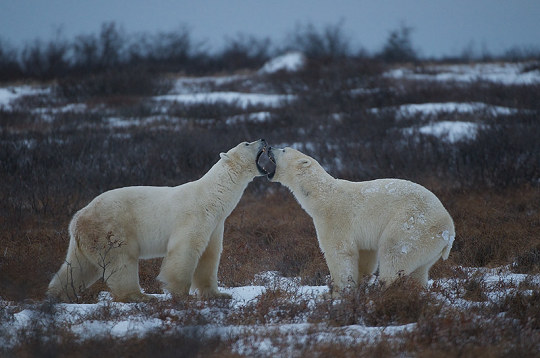
A pair of polar bears (Ursus maritimus) play fighting in Manitoba, Canada
by Sean Crane
#polar bear#bears#ursus maritimus#ursus#ursidae#carnivora#mammalia#chordata#wildlife: canada#wildlife: north america
514 notes
·
View notes
Text
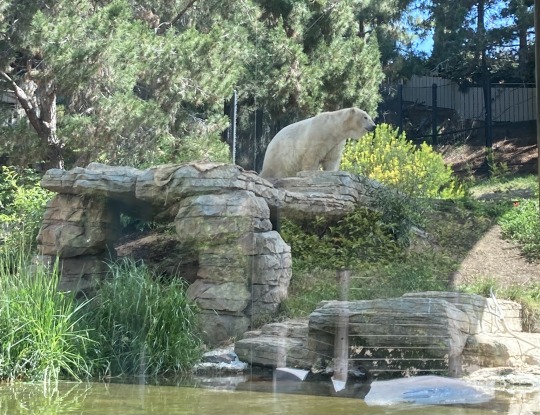

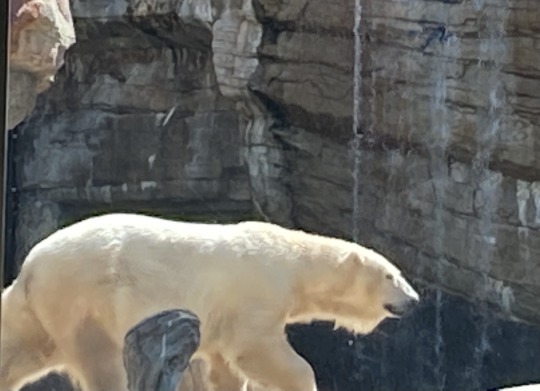
9 notes
·
View notes
Photo
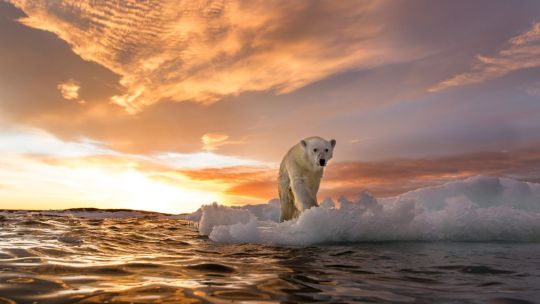
A polar bear (Ursus maritimus) stands on melting sea ice near Harbour Islands, Canada.
(Image credit: Getty Images)
#getty images#photographer#polar bear#ursus maritimus#bear#wildlife#mammal#animal#harbour islands#canada#nature
14 notes
·
View notes
Text
Intersexual or transgendered individuals also occur among Polar Bears (Ursus maritimus), comprising about 2 percent of some populations.
"Biological Exuberance: Animal Homosexuality and Natural Diversity" - Bruce Bagemihl
#book quote#biological exuberance#bruce bagemihl#nonfiction#intersex#transgender#polar bear#ursus maritimus
0 notes
Photo
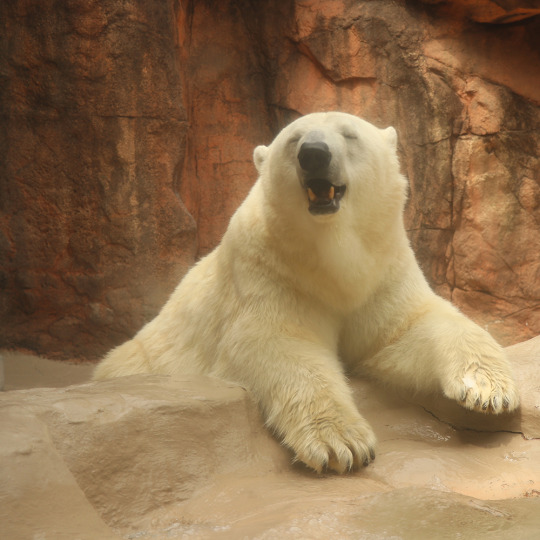


バニラちゃん、表情豊かな餅みたいでかわいい
@日本平動物園
61 notes
·
View notes
